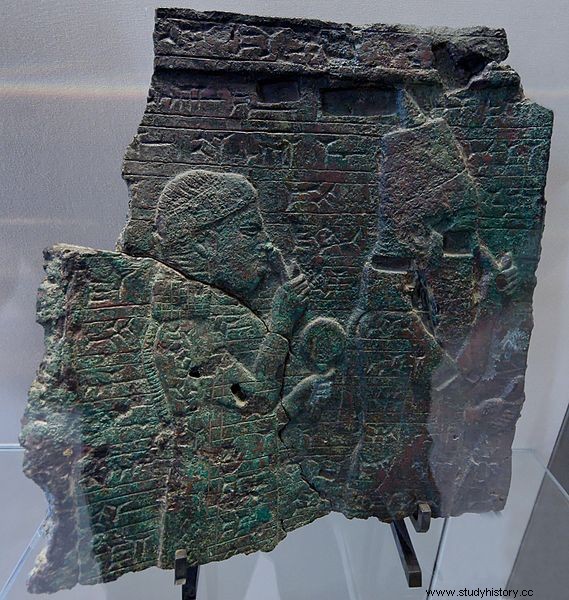Queen of the Kingdom of Kedar, an ancient Arab kingdom located in southern Palestine, Samsi is a bold and powerful ruler who revolted against the Assyrian king.
“Queen of the Arabs”

Samsi's predecessor, Zabibi (or Zabiba, Zabibah), reigned for five years between 738 and 733 BC. Queen of the Kingdom of Kedar, she is a vassal of Teglath-Phalasar III, king of Assyria. She is mentioned in the annals of Teglath-Phalasar III, among the list of sovereigns who pay tribute to her, under the title of "Queen of the Arabs".
In 733 BC, she abdicated in favor of Queen Samsi succeeding her. At the head of the Kingdom of Kedar, Samsi also bears the title of “Queen of the Arabs”. Like Zabibi, she pledges allegiance to the Assyrian King Teglath-Phalasar III, of whom she is a vassal.
In 732 however, the Assyrian king decided to change the mode of domination of some of his vassals, replacing their sovereign with Assyrian governors. Samsi is unlikely to be one of them, but she joins Rakhianu of Damascus in a revolt against Teglath-Phalasar III.
Revolt against Teglath-Phalasar III
Having recently subjugated the Kingdom of Urartu and the Kingdom of Edom, the king is concentrating his efforts against the rebel troops. According to Assyrian chronicles, he defeated Samsi around Mount Sa-qu-ur-ri (the place is not identified). The battle claims many casualties and Teglath-Phalasar III leaves with prisoners and a heavy toll of war, but the queen manages to escape into the desert.
Samsi does not retain his freedom for long; quickly, she is captured and delivered as a prisoner to the Assyrian king. Appointing a governor to oversee the kingdom, he restores the queen to her throne at the cost of a heavy tribute of gold, silver, camels and spices. Maintaining a ruler he defeated, Teglath-Phalasar III seeks to maintain and protect the lucrative trade routes through the kingdom of Kedar.
Samsi reigns over the kingdom of Kedar for about twenty years. Around 700 BC, another queen, Yatie, succeeded her.
